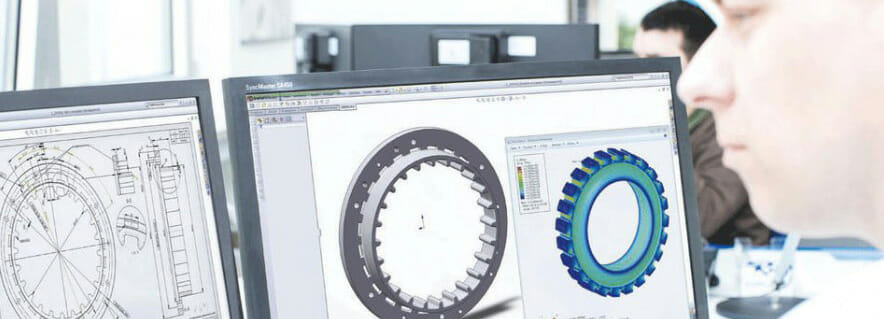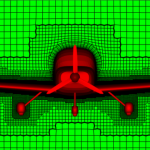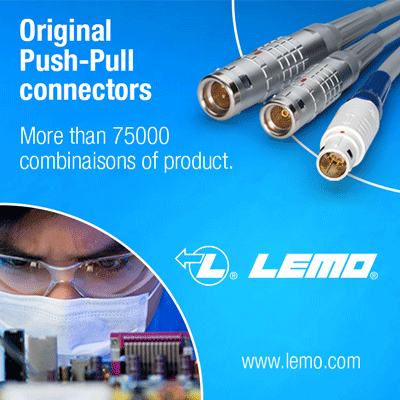Vibration can be present in any drive train, whether it is the low level naturally occurring type produced from combustion engines or electric motors, as a result of their speed and number of cylinders or stator poles, or being induced as a result of other factors. Either way, vibration if left unchecked, can be the root cause of pre-mature wear or even catastrophic failure within a drive train. In this article, David Proud General Manager of Reich Drive Systems UK explains how to overcome the potentially damaging effects of vibration using drive couplings with a high torsional flexibility
Many drive train problems encountered with rotating or reciprocating equipment can usually be traced back to some form of vibration being generated by whilst in operation. There are many factors that can influence the type and severity of the vibrations being produced. Some may relate to equipment moving slightly over time, out of balance items, poor alignment between the different drive train elements during installation, or instances where the vibrations occur as a result of the natural characteristics of the engine or motor.
The naturally occurring vibrations from combustion engines or electric motors are somewhat predictable, usually low level, and the effects can often be minimised to a large extent by giving detailed consideration to the way the items are mounted or isolated. However, there may be instances where this has not been possible, or where particular operating conditions or a specific configuration causes vibration to be intensified. For example, within a diesel engine, the number of cylinders, their firing order and speed of operation induces torque pulses, adding to the normal torque being transmitted through the drive train. These torque pulses pass through the drive train in the form of torsional vibrations, which are often much more difficult to identify, as they do not exhibit the same visible characteristics as vibrations caused for example, as a result of a misalignment issue.
Torque pulses also add a twisting effect on the drive train and the various elements react in the same manner as a spring might, by releasing the energy generated by the initial twisting motion – but in the opposite direction. The rate at which this happens is determined by the stiffness of the different elements in the drive train, which in turn determines the frequency of the system.
The effects of the excitation introduced to the driven system by the engine will also vary depending upon the engine RPM.
Where this frequency matches the natural frequency of the system, resonance will occur. In normal use, engine RPM varies between idle and operating speeds. As it does so, it can pass through any critical areas without issue, providing the transition is achieved quickly. If however, if the engine RPM remains in the critical region for long periods, whether this is at idle or at usual operating speeds, problems resulting from torsional vibration will occur.
To avoid these issues, a detailed torsional vibration review should be undertaken, and calculations made, which will allow the selection of a drive coupling suitable for the specific application
Drive couplings are much more than just a physical connection between drive elements.
They protect the drive train through their ability to accommodate mechanical discrepancies, such as axial, angular or radial misalignment and also mitigate other factors such as shock loads, starting frequencies, temperature variation,
Overcoming Torsional Vibration In The Drive Train environmental conditions, and of course vibration. Selecting a drive coupling which has the correct torsional stiffness characteristics is the first step to ensuring that vibration does not become the prime cause of failure.
As part of a comprehensive range, Reich’s Arcusaflex coupling has been designed to absorb high levels of torsional vibration and shock loading, protecting drive trains against overload conditions. This highly flexible flywheel coupling provides a torsionally soft connection between the internal combustion engine and a driven machine. The highly flexible torque transmission characteristics are achieved using a disc-shaped rubber element that is subjected to a torsional load and enables both, the absorption of high torsional vibrations together with the compensation of major misalignments. The inside diameter of the rubber disc element is vulcanised directly to a taper hub or bolt-on sleeve. The toothed profile on the circumference of the element provides a virtually backlash-free, positive plug-in connection to the coupling flange. Shaft-to-shaft connections where required, can be achieved by Arcusaflex shaft couplings consisting of flywheel couplings of the standard design, equipped with a second hub.
The process of coupling selection for any application should always be given detailed consideration, to take into account all of the factors which the coupling is likely to encounter in service. Discussing the application with a reputable coupling manufacturer, and providing them with the information needed to undertake a torsional analysis, will ensure that the recommended coupling will be capable of accommodating the natural frequencies, whilst at the same time reducing any effects from torsional vibration. Engineers who have experienced pre-mature failure of existing coupling types should also consider whether excessive torsional vibration has played a part in that failure, and take steps to ensure that any new coupling has been selected following a torsional analysis of the application.
With a history spanning over 70 years, REICH-KUPPLUNGEN has built up unrivalled expertise in the design and manufacture of drive couplings for use across a wide range of industries and applications. The company has earned an enviable reputation not only for the quality and performance of their product range, but also for their ability to provide application and customer specific solutions through the company’s D2C (Design to Customer) philosophy.







